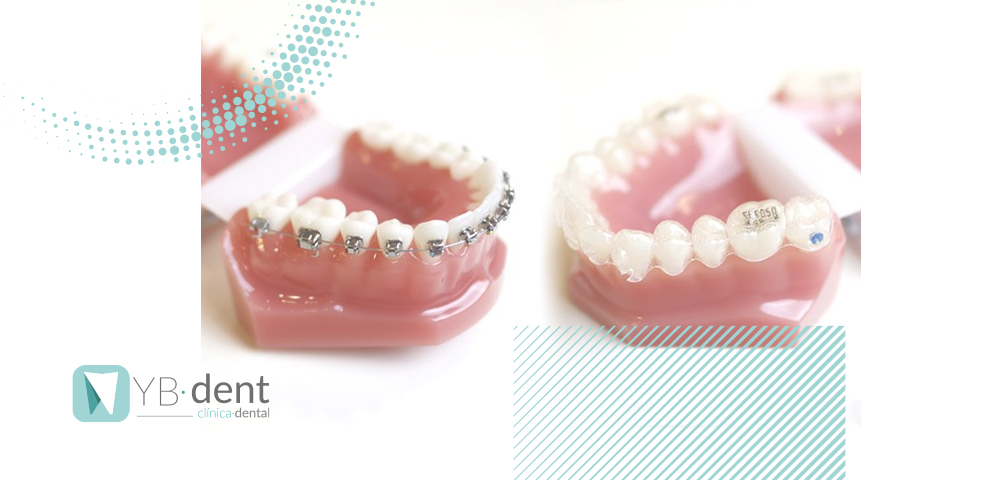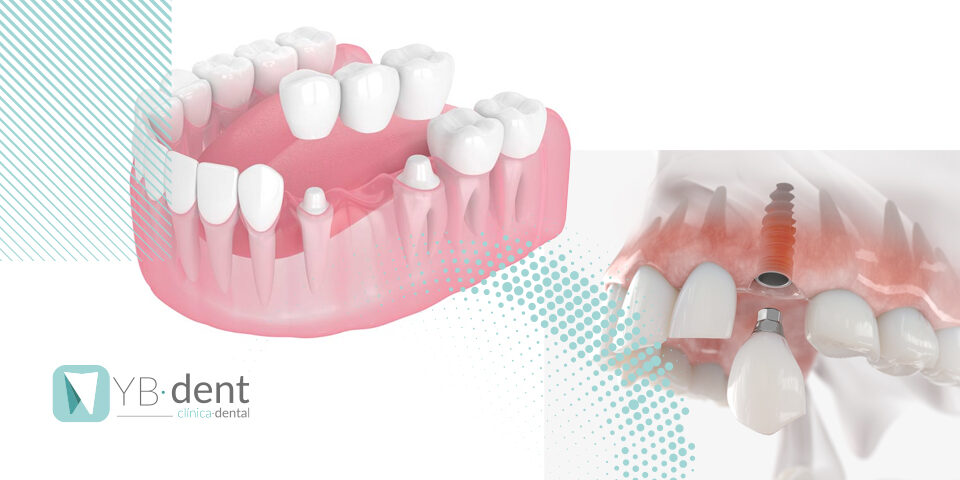Diferencias entre Invisalign y brackets

A nadie le resulta extraño ya escuchar hablar sobre los brackets o el Invisalign. Estos métodos de corrección dental se han vuelto muy comunes entre la población y cada vez necesitamos más información para saber qué opción escoger.
Si es tu caso, desde clínica dental en Valencia YBdent, te lo contamos todo sobre el Invisalign y los brackets para que puedas elegir el que más se adapte a ti.
Es cierto que se ha investigado mucho y se sigue haciendo para poder avanzar con la ortodoncia a pasos de gigante. Los brackets supusieron para la salud dental una revolución social que incluso llegó a convertirse en una moda.
Más allá de eso, hay muchos profesionales dedicando su tiempo a una cuestión tan importante como la ortodoncia y consiguiendo grandes evoluciones como pasar de los brackets al Invisalign u ortodoncia invisible.
Aunque la ortodoncia invisible haya aportado a este sector un I + D inimaginable, es el diagnóstico de un profesional el que determina la viabilidad de las opciones de las que disponemos.
Brackets
Generalmente, si nos dirigimos a un público joven suelen escoger brackets pero ¿Por qué? Sencillamente porque se ve, porque pueden combinar distintos colores y porque es más económico.
No obstante, debemos saber que existen varios tipos de brackets:
Brackets metálicos
Podríamos decir que son los de “siempre” ya que son los primeros que salieron al mercado y por tanto los más básicos. Son los más económicos y fuertes pero también los menos estéticos. Sin embargo, una de sus principales ventajas es que la limpieza es más sencilla que la del resto.
Brackets de zafiro
Son bastante funcionales, duraderos y estéticos, se conocen como brackets invisibles. Ahora bien, también es destacable que su precio suele ser elevado.
Brackets cerámicos
Aunque su precio sea más alto que los metálicos, son más económicos que los de zafiro y presentan una efectividad y una estética remarcables por lo que es una de las opciones más utilizadas.
Brackets de resina o plástico
Aunque su estética sea buena, suelen contar con bastantes inconvenientes ya que, por un lado, esta se va perdiendo y, por otro, aunque son económicos suelen romperse con mayor facilidad.
Ortodoncia Invisalign
El tratamiento de ortodoncia invisible Invisalign se trata de una férula transparente elaborada con un material sanitario para apoyar la posición perfecta de nuestra mordida. Se hace a medida y es gradual, esto quiere decir que cada cierto tiempo deberán cambiarse.
A diferencia de los brackets, es un público más adulto el que suele escogerlo ya que es muy estético y cómodo y su precio es más elevado.
Normalmente dependiendo de cómo evolucione el tratamiento y de cómo el especialista lo vea necesario se deberán renovar cada semana, 15 días o cada mes para alcanzar los objetivos. Esto no quiere decir que debamos acudir a nuestra cita con el dentista cada siete días, sino que iremos cambiando las férulas en tiempos determinados.
¿Cuáles son las diferencias entre Invisalign y brackets?
Después de conocer un poco sobre cada uno de ellos, vamos a resumir sus principales diferencias:
La estética
Aunque un tratamiento de ortodoncia nunca prima la estética, los pacientes sí y no cabe duda de que el Invisalign es perfecto para ello.
La comodidad
Otro de los puntos fuertes del Invisalign es su comodidad y es que nos lo podemos quitar para comer, para cepillarnos los dientes y además es suave. Sobre todo, podemos sentir nuestros dientes normales ya que a mucha gente le molestan y generan heridas los alambres de los brackets.
El precio
Los brackets son más económicos que el Invisalign, sobre todo si recurrimos a brackets metálicos.
La durabilidad
Aunque esto es algo que debe analizar cada profesional, cada persona es un mundo, el proceso con el Invisalign suele ser más largo.
Ahora bien, tanto con brackets como con Invisalign existen buenos y malos tratamientos por lo que la mejor opción es ponerse en buenas manos y personalizar en su totalidad el caso de cada uno.



